
Gardeners who are new to succulent care may find themselves wondering why their green thumb doesn’t seem to apply to succulents and cacti. Succulents are well-known for their low maintenance needs, so why don’t they stay alive when you give them the same loving care that you give your other houseplants.
While it’s true that succulents are generally easy to care for, it should be noted that they don’t do well with too much care. Succulents love to be neglected, so be prepared to take a more hands-off approach with these plants. Less is definitely more when it comes to caring for succulents and cacti.
Related Article: How Much Sunlight Do Succulents Need?
Jump to:
Best Location for Succulents
Whether you plant your succulents in the ground or in a container will depend mainly on the area you live in. If you live somewhere with cold winter or rainy seasons, you may find more success in growing your succulents in containers. With containers, you can move your succulents around to keep them warm and dry when needed. You’ll also be able to adjust the amount of sunlight they’re exposed to.
Related Article: How Big Do Succulents Get
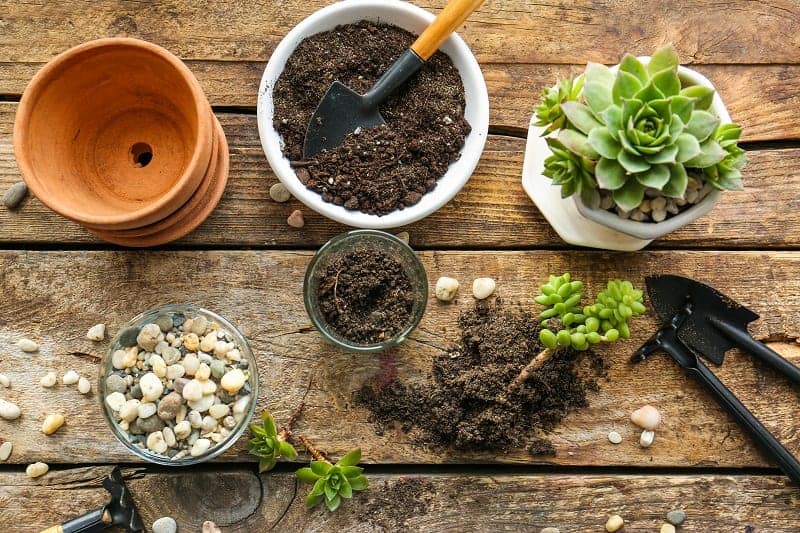
The downside of planting succulents in a container is that you may find yourself watering your plants more frequently in hot weather. Moisture tends to evaporate more quickly from pots than from the ground. You’ll also need to decide whether plastic pots or terracotta are more appropriate for your needs.
If you live in a climate appropriate for succulent growth, you may be able to plant them in the ground. The main advantage of planting your succulents in the ground is that it makes an already easy job even easier. Obviously, plants are meant to grow in the ground rather than in containers, so they often grow better when kept in an environment similar to their natural habitat.
However, if temperatures frequently drop below freezing or your area receives a significant amount of rainfall, planting in the ground may expose your succulents to dangerous conditions. It will also be much more difficult to move your plants around, so you’ll need to be sure you’re planting them in an area with the correct amount of light.
Soil Quality for Succulents
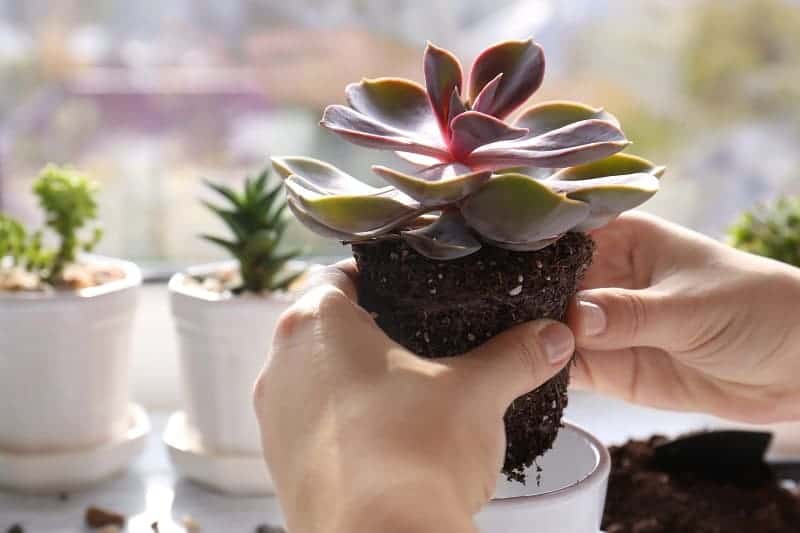
Good drainage is the single most important characteristic of soil for succulents. Without adequate drainage, succulents and cacti are prone to developing root rot. However, even if you have the correct type of soil for your plant, it will do no good if your container doesn’t allow excess water to drain out.
No products found.
The ideal soil for succulents and cacti contains large particles and very little clay. Clay tends to retain water, which can be deadly to succulents. Regular potting soil for flower or vegetable gardening may contain too much clay for your succulents to thrive. You’ll also want to avoid soil that is particularly dense. Succulents and cacti need good airflow to survive, so be sure to choose your soil carefully.
When shopping for soil, look for one labeled for use with cacti or succulents. It will likely be comprised of ingredients such as sand, gravel, perlite, or bark. Commercial cactus soil blends will keep your succulent alive, but it may need some adjustments. If you’re not satisfied with what your local nursery has to offer or are feeling crafty, making your own soil is easy and inexpensive to do.
Light Needs of Succulents
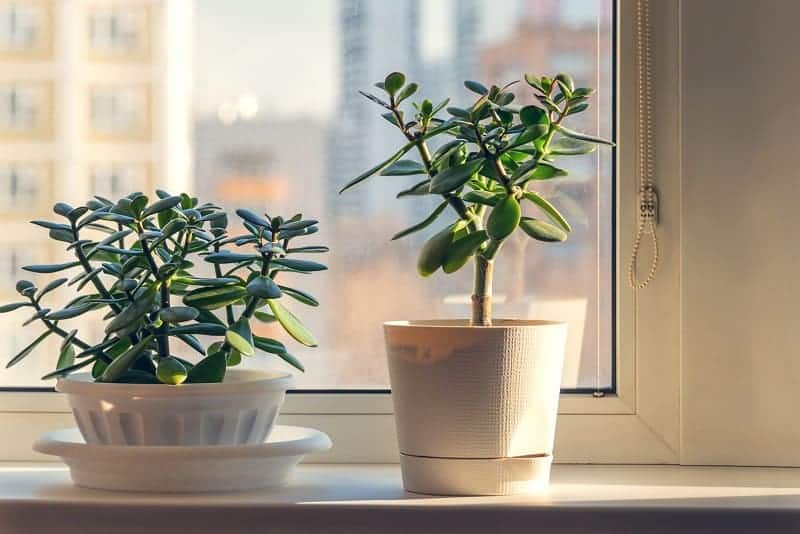
Most succulents prefer bright light, but some can do quite well in low-light environments. Placing your succulent containers near a sunny window should provide them with adequate light. However, different species sometimes have different light requirements so be sure to research each of the plants you bring home. Some succulents may enjoy a sunny window but with a sheer curtain to filter some of the sun’s rays.
It’s important to keep a close watch on your succulents, especially if you’ve just brought them home from the nursery. If your succulent develops any discolored patches on its leaves, it may be getting sunburned. The patches may range in color from tan to black, depending on the severity of the burn. Unfortunately, sunburn causes permanent damage and you’ll need to either trim off the damaged leaves or wait for the plant to grow enough to replace the sunburned sections.
The best way to prevent sunburn is to let your succulents adjust to bright light slowly. The process may take a couple of weeks but keeping your succulent alive is worth the trouble. Start with just a few hours of bright sunlight per day and increase the exposure in small increments every few days. After a week or two, your plant should be adequately adjusted to brighter light.
Temperature Needs for Succulents
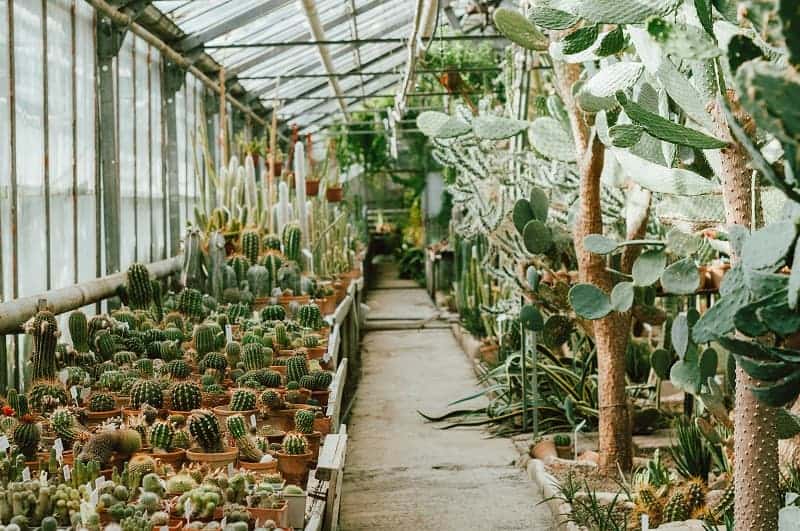
Succulents and cacti tend to grow in arid climates, which means their environments are usually fairly warm. Some succulents can be sensitive to extreme heat while others, like cacti, will do just fine in the hottest weather. During the summer months, you may find yourself watering your succulents more frequently to help compensate for the heat. Keep a close watch on your succulents during heat waves. If you suspect that temperatures are too high for your succulent, simply bring it indoors until it cools down a bit outside.
In general, succulents are not frost tolerant plants. If you live in a climate where temperatures dip below freezing on a regular basis, you’ll need to bring your plants indoors until it warms up. If your succulents are planted in the ground or you aren’t expecting long periods of freezing temperatures, you can always cover them to insulate them from the cold. There are a few species of succulent that can endure winter, however, so if you’re looking for a frost hardy succulent try growing Sempervivum or Sedum.
Water Needs for Succulents
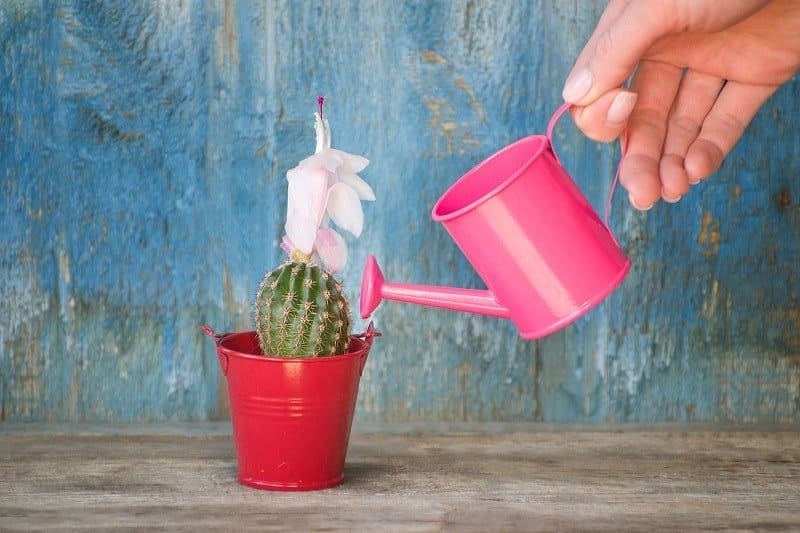
Overwatering is the number one reason that most gardeners struggle to keep their succulents alive. Remember, succulents tend to live in pretty dry habitats, so they’re used to going long periods without water. If you water your succulents too frequently, they’re likely to develop root rot. Unfortunately, since root rot develops below the surface of the soil, it can be difficult to notice until it’s too late.
Proper watering habits will drastically improve your success rate in growing succulents. Before watering your succulents, check the soil for moisture. It’s important to check below the surface of the soil as the surface can be dry while an inch or so down is still quite wet. If the soil is dry, proceed with watering, but if it’s wet, you’ll need to wait a bit longer. A good rule of thumb is to water your succulents about every 10 days or so.
Another reason that it’s important to research the types of plants you bring home is whether or not that species undergoes a dormancy period. During these periods, plants will need far less water than usual. Some plants may not need any water at all until the seasons change. Depending on the species, some plants go dormant during the summer while others go dormant during winter. Remember, the more you know about your succulent, the better you’ll be able to keep it alive.
You Might Also Like:

